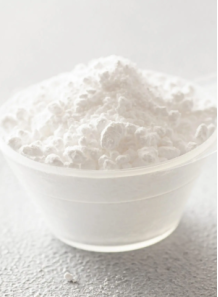Magnesium Oxide (Heavy, USP)
Food
Code: 127223
high purity Magnesium Oxide (USP grade)
Magnesium Oxide (Heavy, USP)
high purity Magnesium Oxide (USP grade)
Magnesium Oxide Light vs Heavy
Magnesium oxide (MgO) is available in two main forms: light magnesium oxide and heavy magnesium oxide. These two forms differ in their physical properties, production methods, and applications. Here's a detailed comparison:
1. Production Method
- Light Magnesium Oxide:
- Produced by calcining magnesium carbonate (MgCO₃) or magnesium hydroxide (Mg(OH)₂) at relatively low temperatures (around 700–1000°C).
- The process results in a fluffy, low-density powder with a large surface area.
- Heavy Magnesium Oxide:
- Produced by calcining magnesium oxide at high temperatures (above 1500°C).
- The high-temperature process leads to a denser, more compact form with smaller surface area.
2. Physical Properties
| Property | Light Magnesium Oxide | Heavy Magnesium Oxide |
|---|---|---|
| Density | Low density (0.2–0.5 g/cm³) | High density (3.0–3.4 g/cm³) |
| Particle Size | Fine, fluffy particles | Coarse, dense particles |
| Surface Area | Large surface area | Smaller surface area |
| Bulk Volume | High bulk volume | Low bulk volume |
| Reactivity | More reactive | Less reactive |
3. Applications
- Light Magnesium Oxide:
- Used in applications where high reactivity and large surface area are important.
- Common uses:
- Pharmaceuticals: As an antacid or laxative.
- Food Industry: As a food additive or nutrient supplement.
- Rubber and Plastics: As a filler or curing agent.
- Environmental Protection: For wastewater treatment or flue gas desulfurization.
- Heavy Magnesium Oxide:
- Used in applications where density, thermal stability, and durability are critical.
- Common uses:
- Refractory Materials: For manufacturing refractory bricks or linings.
- Construction: As a component in cement or flooring materials.
- Electrical Insulation: In cable insulation due to its high thermal conductivity.
- Agriculture: As a slow-release magnesium fertilizer.
4. Key Differences
| Aspect | Light Magnesium Oxide | Heavy Magnesium Oxide |
|---|---|---|
| Density | Low | High |
| Reactivity | High | Low |
| Surface Area | Large | Small |
| Production Cost | Lower | Higher |
| Typical Use Cases | Pharmaceuticals, food, rubber | Refractories, construction, insulation |
5. Choosing Between Light and Heavy Magnesium Oxide
- Choose light magnesium oxide if you need high reactivity, large surface area, or fine particles.
- Choose heavy magnesium oxide if you need density, thermal stability, or durability.
| Mechanism | - |
| Appearance | - |
| Longevity | - |
| Strength | - |
| Storage | - |
| Shelf Life | - |
| Allergen(s) | - |
| Dosage (Range) | - |
| Recommended Dosage | - |
| Dosage (Per Day) | - |
| Recommended Dosage (Per Day) | - |
| Mix Method | - |
| Heat Resistance | - |
| Stable in pH range | - |
| Solubility | - |
| Product Types | - |
| INCI | - |
Purchase History for
Loading purchase history...
Cart
No products
Subtotal:
฿0.00
Total
฿0.00
THB



